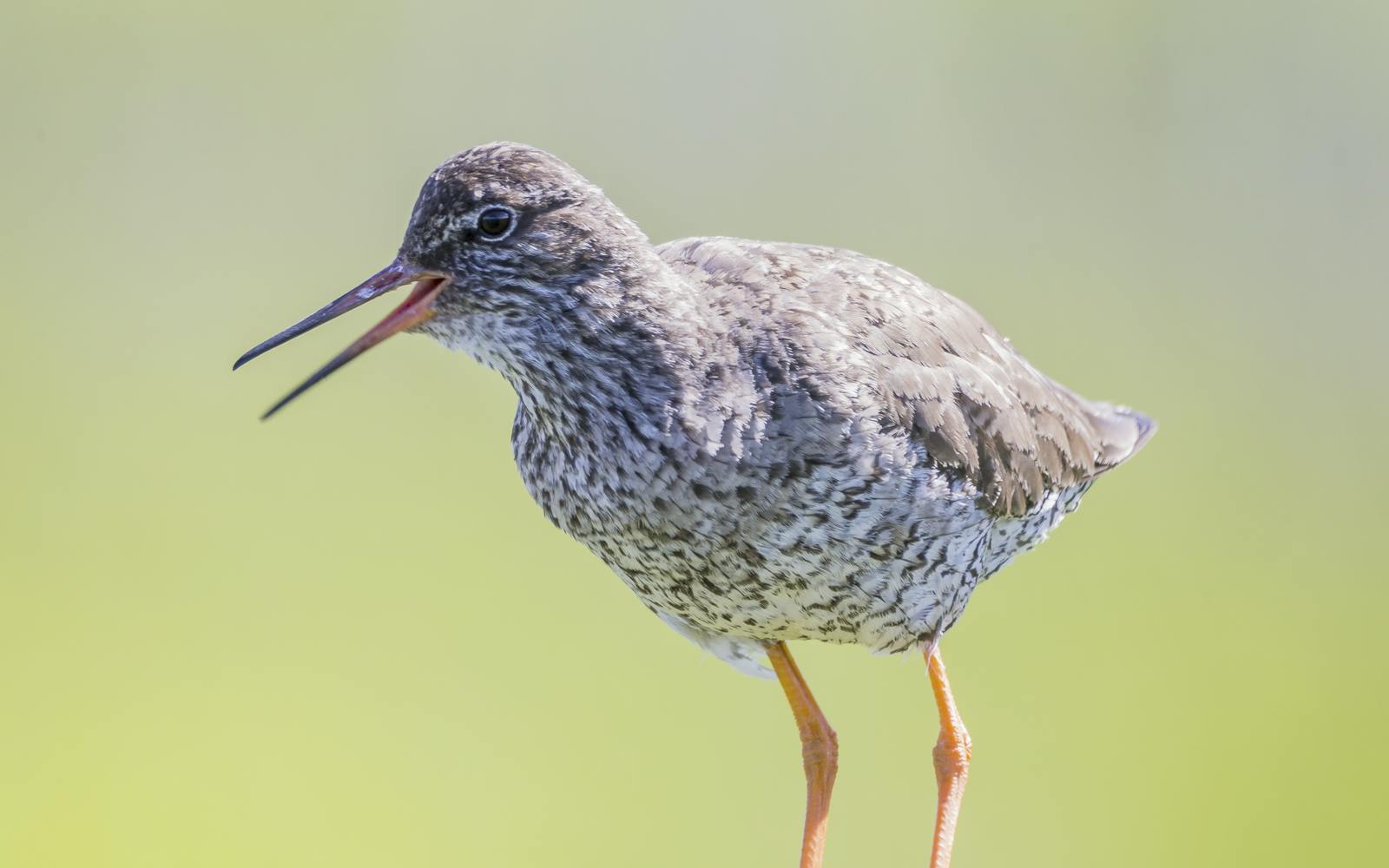
Spot the Common Redshank in Iceland
The Common Redshank (Tringa totanus) belongs to the family Scolopacidae and the so-called waders (Charadeiiformes). Waders are migratory birds that enter Iceland in big flocks in the spring and leave in the autumn. Even though waders migrate together and are very sociable, they do not nest in colonies.
Representatives of the Scolopacidae family in Iceland besides the Redshank, are the Common Snipe (Gallinago gallinago), Black-tailed Godwit (Limosa limosa), Dunlin (Calidris alpina), Purple Sandpiper (Calidris maritima) and the Whimbrel (Numenius phaeopus). These birds live close to wetlands and seashores, where they can use their long beak to feed on invertebrates of all sorts.
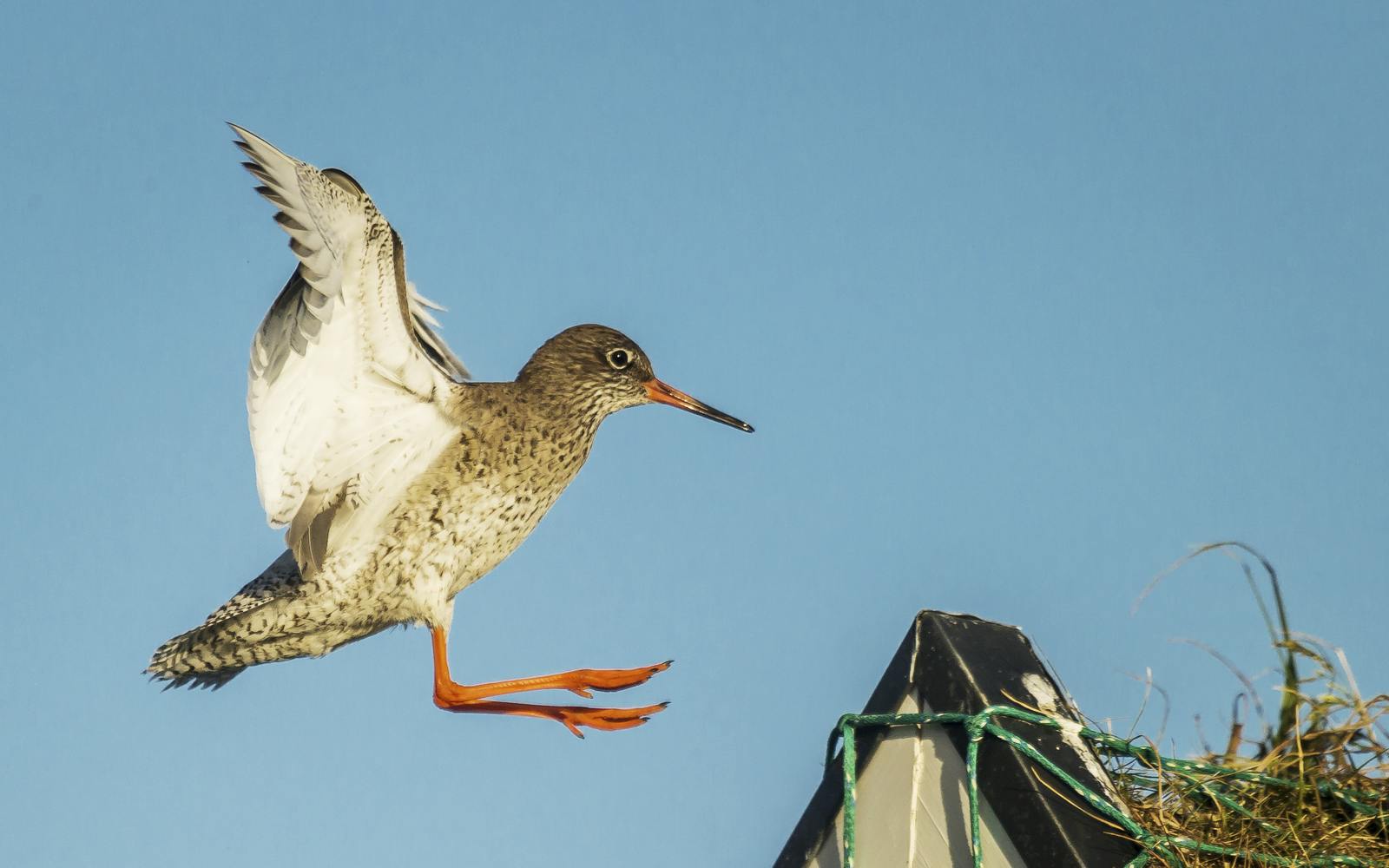
Where Does the Redshank Live?
The Redshank is well distributed in Europe, also found in Asia and all the way east to China. Icelandic Redshanks spend the winter mostly in Great Britain but have also been spotted in countries by the Northsea. The Icelandic Redshank population is estimated now around 75.000 breeding pairs which is less than previously assumed. The bird is found all around Iceland but is most common in the lowlands below 400m.
Discover the magical mysteries of Icelandic nature and wildlife at the Perlan Museum in Reykjavík. Inside, explore a treasure trove of fun activities that let you dive deep into all the amazing things Iceland has to offer. This special experience is made for all ages, bringing together the incredible beauty and nature of Iceland into one fantastic place at the Perlan Museum. Read more about the exhibitions at Perlan here.
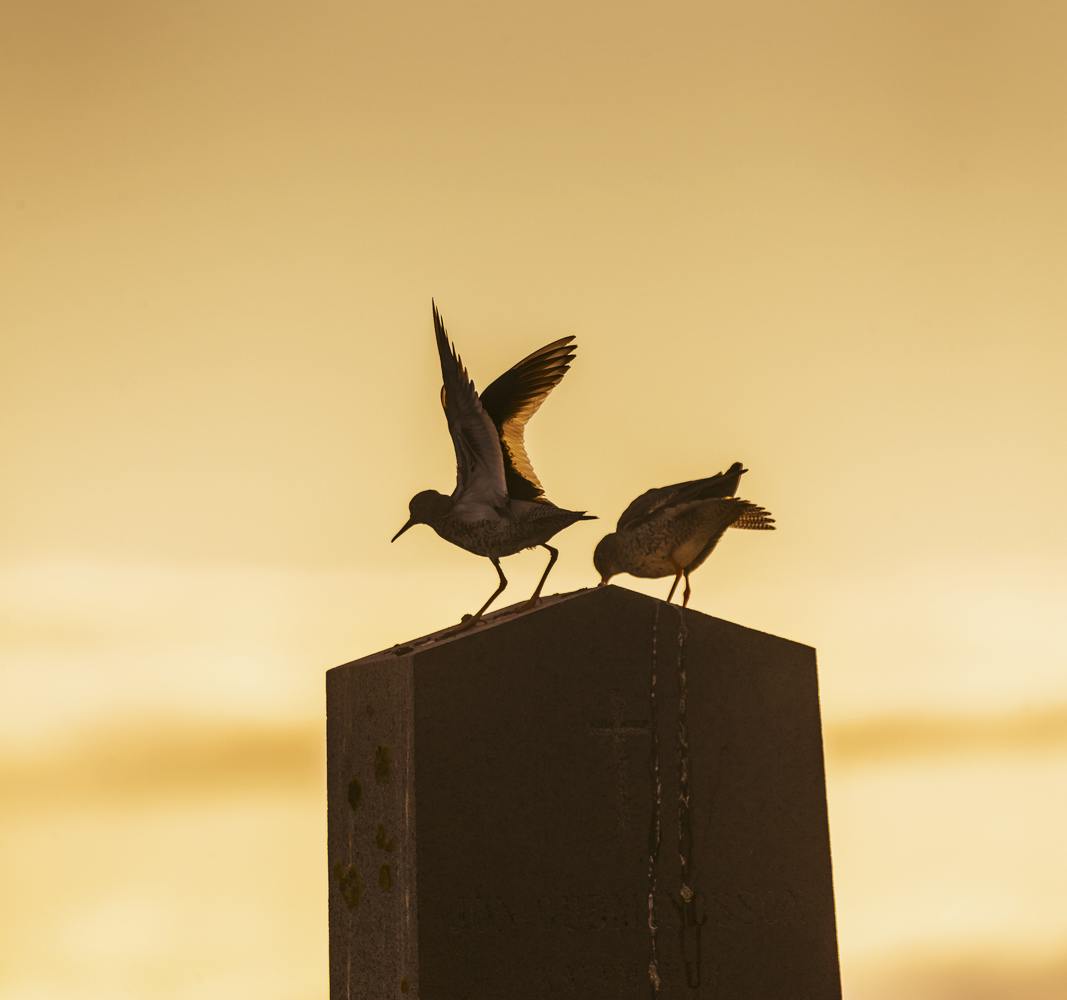
Characteristics of the Redshank
The Redshank is grey or brownish. The head is dark with light dimples, but the lower body has stripes. The back is darker than the belly. The underwing is white, but the wingtips are black, and the beak is straight and orange with a black tip. The slender orange legs are characteristic of the Icelandic Redshank. The long legs are of great use to wade in ponds and shores where the bird feeds.
The English name Redshank and the Danish name „Rödben“ means red legs, but the Icelandic subspecies (T. t. robusta) has orange legs. The Icelandic name „Stelkur“ means stalk in English and points towards these long slender legs. The Redshank is a medium-sized wader, weighing about 150 g (5.3 oz) and is 25-29 cm (9.8-11.4 in) long.
The bird flies in a zig-zak motion and often glides after short flying sprouts on his 60-65 cm (23.6-25.6 in) wingspan. Redshank often sits on fence posts and grass tops where it watches over the nesting area and cries out loud alarms if anyone enters. One of the sounds of the Icelandic summer belongs to the Redshank. People wandering around in grassy areas should close their eyes and listen. Most likely, a Redshanks is close by and calls out his warning call:tííjúú-tííjúú-tjiikk-tjiikk.
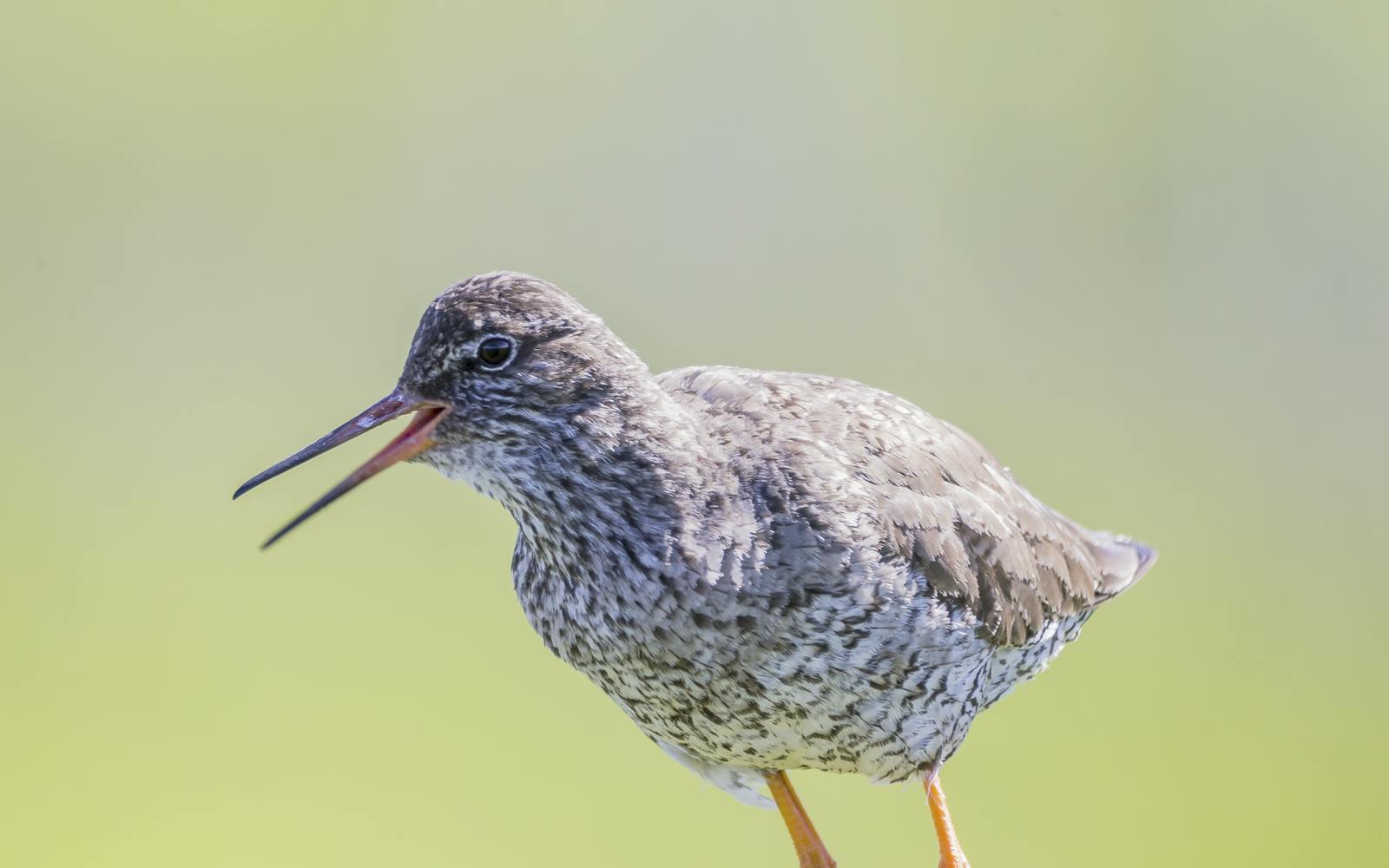
Nesting Habits Of the Redshank
Redshanks usually nest in grassy areas, where they make a small dent and line it with dry grass for the eggs. They start incubating 3-4 eggs in late May or the beginning of June. The grass topps conceal the nest and the incubating bird, so it can be very hard to spot a Redshank's nest if the bird is still. Both male and female Redshank care for the nest 24 incubation days.
After hatching, the chicks stay in the nest for 24 hours before leaving to feed themselves. The legs of newly hatched chicks in the nest are so well developed making it possible to mark them with a metal ring which lasts a lifetime while still in the nest. Redshanks chicks have, like other waders, great camouflage colour. They are dark brown with lighter brown or yellowish stripes, making them disappear in the environment. The female often leaves the chicks after fledging to recover from the incubation. The male stays around the chicks until they can fly. He shows them good feeding areas and warns them of any possible danger with his high-pitched calling.
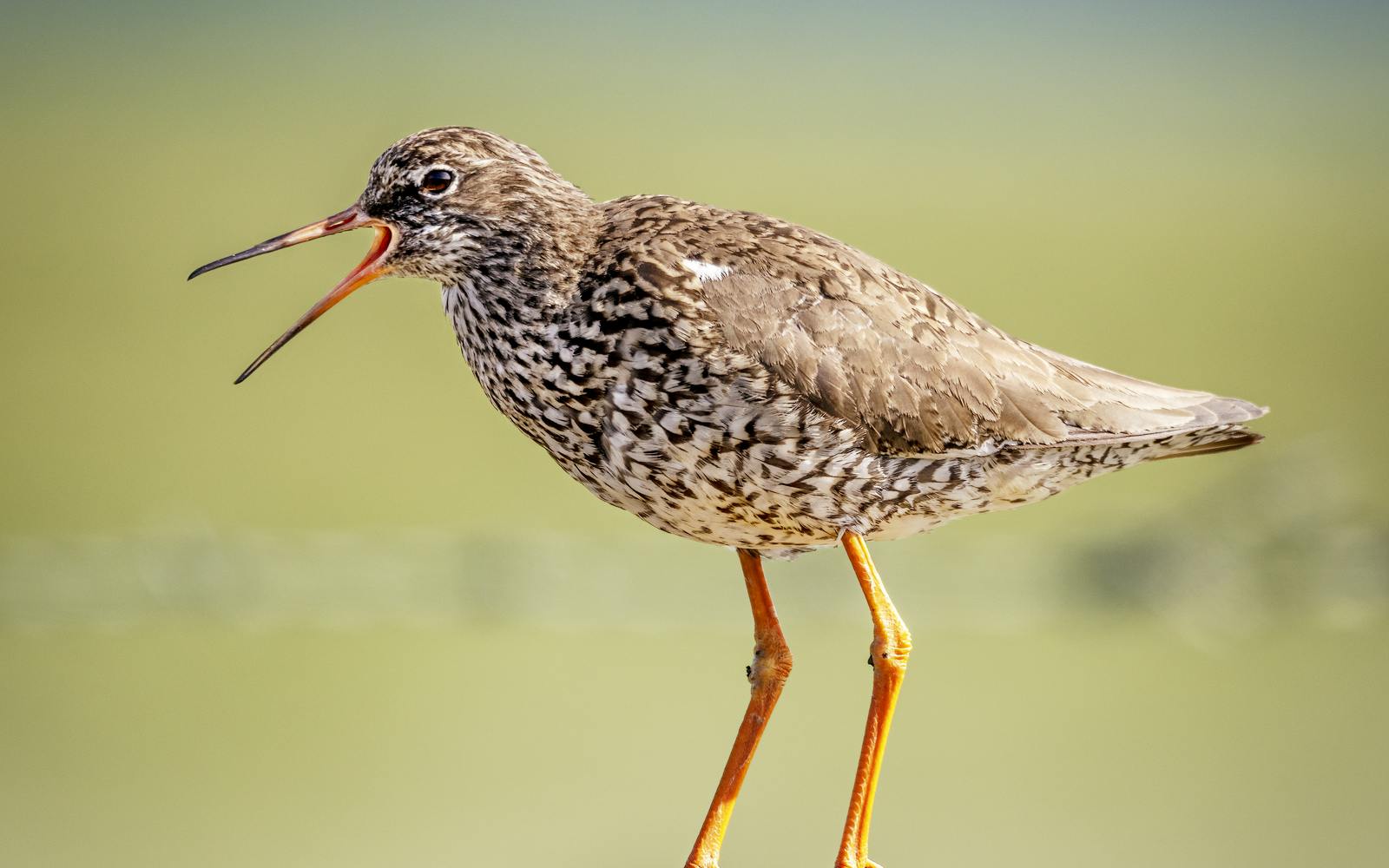
Five Noisy Facts About the Redshank
- The Icelandic name „Stelkur“ means stalk in English and points towards the long, slender legs.
- The English name „Redshank“ and the Danish name „Rödben“ means red legs, but the Icelandic subspecies (T. t. robusta) have orange legs.
- The chicks hatch with legs that are so well developed that it is possible to mark them with a metal ring that lasts a lifetime while still in nests.
- Most Icelandic Redshanks fly to Great Britain in the autumn. However, some Redshanks choose to live around Faxaflói and the southwest part of Iceland over the winter.
- Iceland is the most important breeding area for Redshanks in Europe, with over 75,000 breeding pairs.








